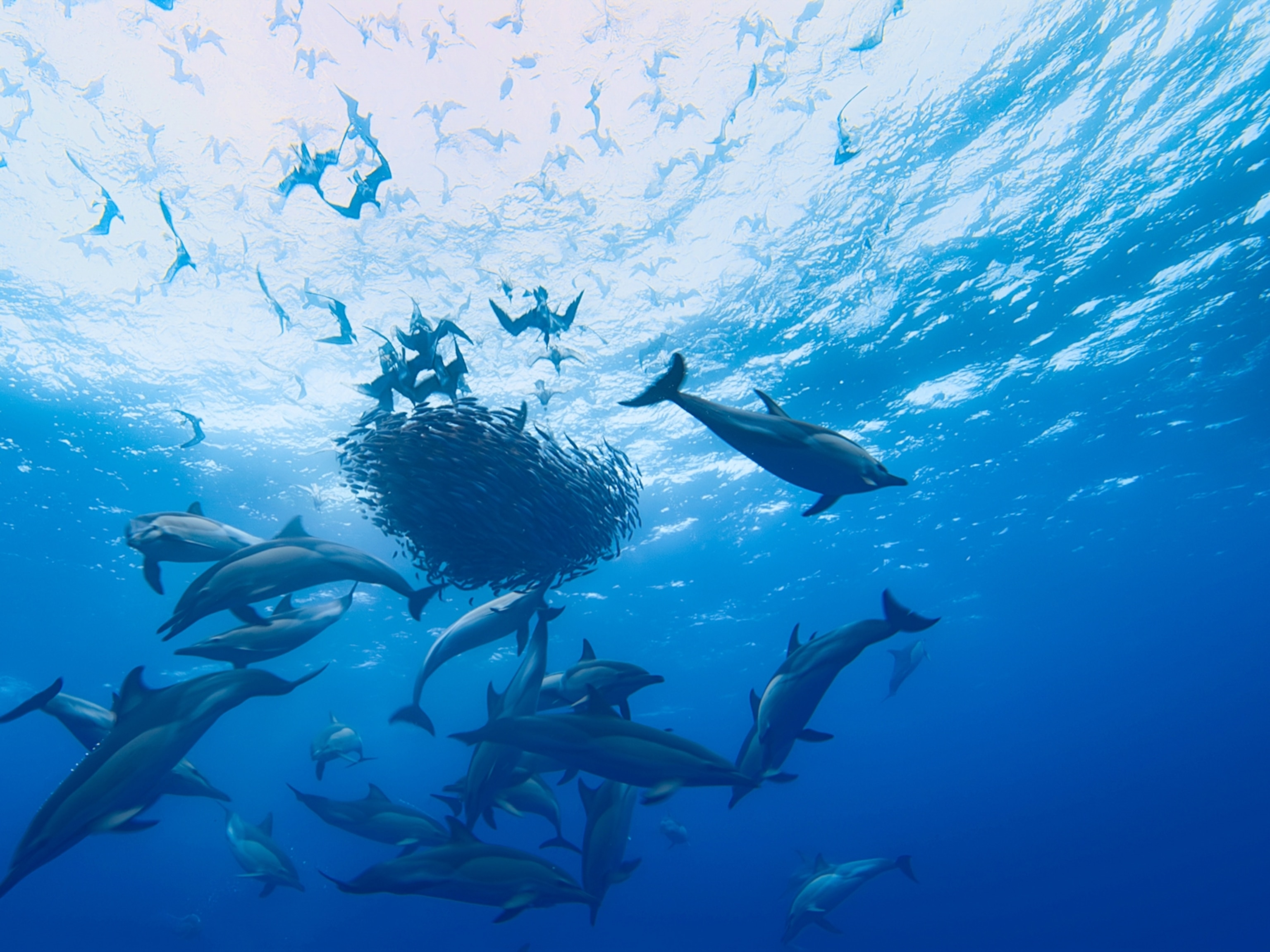
Dolphin-Safe Tuna Rules Just Got Tougher
Here's what you need to know about the label.
On every can of Starkist, Bumble Bee, or Chicken of the Sea tuna, there’s the silhouette of a dolphin within a tiny circle, an assurance that no dolphins were killed as tuna bycatch and that you can enjoy your tuna sandwich sans a side order of guilt.
The “dolphin-safe” label has been around for decades, but this week the U.S created stricter rules for using it. While this is good news for dolphins, the tougher regulations actually stem from an ongoing trade spat with Mexico rather than pushback from conservationists.
For about 20 years, Mexico has complained to the World Trade Organization (WTO) that the U.S. rules discriminate against it by imposing stricter standards on its tuna fishing vessels in a swath of the eastern tropical Pacific Ocean extending from Southern California to Peru. Last year, the WTO agreed with Mexico for the second time and ordered the U.S. to make some changes.
Instead of simply loosening the standards on Mexico, though, the U.S. decided to expand the tougher rules to the rest of the world. “This rule elevates requirements for tuna product from every other region,” said U.S. Trade Representative Michael Froman in a statement, according to Reuters.
So what will the new regulations require? And by the way, how did the dolphin-safe label even make its way onto tuna cans across the U.S.?
Tuna companies have been branding their tuna as dolphin-safe since 1990.
In the eastern tropical Pacific Ocean, spotted, spinner, and other types of dolphins often swim above schools of yellowfin tuna. In the mid-1900s, fishermen noted this phenomenon (which scientists can’t explain) and began searching for dolphins to get to the lucrative tuna. Then came speedboats, chasing down dolphins and encircling them as the fishermen dropped purse seines—giant nets that enclose prey like a drawstring bag, often trapping dolphins with the tuna. By the 197os hundreds of thousands of dolphins were dying each year.
Around the same time, people began caring about dolphins. Flipper aired on television, save-the-dolphin campaigns sprang up, and in 1988, an undercover video of dolphins dying in a purse-seine net sparked international outrage and a worldwide tuna boycott. Major tuna companies began buying tuna from fishermen who didn’t kill dolphins, and labeled their cans dolphin-safe.
To prevent fraud, in 1990 the U.S. enacted the Dolphin Protection Consumer Information Act. Under the law, “dolphin safe” meant that no canned tuna could carry the label if dolphins were chased, encircled, or killed.
Did the label actually help dolphins?
It’s tough to say what effect the law had on dolphins. During the same period numerous other government measures were adopted to prevent dolphin deaths, from the Marine Mammal Protection Act of 1972 to the La Jolla Agreement, which set international limits on dolphin mortality.

“Since U.S. consumers were 50 percent of the canned tuna market, labeling could have had some independent effect, but it is difficult to state unequivocally,” Lorraine Mitchell, an agricultural economist with the U.S. Department of Agriculture, wrote in a paper.
But what’s clear is that collectively the measures have drastically reduced dolphin mortality. By 1999 tuna-related dolphin deaths had fallen to fewer than 3,000 a year, according to the National Oceanic and Atmospheric Administration. The number today is closer to one thousand—a big improvement but still reckoned by NOAA to be the largest documented cetacean bycatch in the world. Northeastern spotted and spinner dolphin stocks still haven’t fully recovered.
So what is Mexico’s role in all this?
For about 20 years, Mexico has claimed that the U.S. dolphin-safe label rules freeze it out of America’s canned tuna market—an industry that in 2014 netted $680 million, of which Mexico garnered only a 3.5 percent market share.
Mexico argued that the regulations required fishermen in the eastern Pacific to do more work, such as filling out extra paperwork and having on-board observers. And it asserts that the country has already cut dolphin deaths to minimal levels through new fishing techniques—even though tuna fleets still intentionally use dolphins to locate tuna.
Meanwhile, the U.S. has said that tuna boats in the region (which also include vessels from Ecuador and Panama, among others) have to be strictly regulated because it's the only known place where dolphins play a significant part in catching tuna.
What will the new rules do?
The new rules will require tuna fisheries around the world to keep better track of their fish and in some instances post on-board observers. All captains will have to be trained in best practices and certify that no fishing gear—not just purse-seine nets—was intentionally deployed on dolphins or injured any dolphins.
“These new rules will put a system in place where it can be identified if there is a place where dolphins are being harmed,” said Mark Palmer, associate director of the International Marine Mammals Project of Earth Island Institute. On the other hand, they could also debunk Mexico’s claim that other fisheries kill more dolphins than its own.
It’s not only dolphins that get caught up in the canned tuna industry.
While the label might lead us to think that dolphins are the only animals that die in the tuna quest, that’s not the case. Large-scale commercial tuna fisheries widely use fish aggregation devices, or FADs, which are logs or rafts tethered to the ocean to attract fish. But the device unintentionally kills all sorts of marine life—sharks, rays, marlins, sea turtles—that get scooped up along with the tuna. As Tim Essington, a marine scientist at the University of Washington, describes a FAD: “It’s very dolphin safe, but a lot of environmental groups say it’s not very ocean safe.”
This story was produced by National Geographic’s Special Investigations Unit, which focuses on wildlife crime and is made possible by grants from the BAND Foundation and the Woodtiger Fund. Read more stories from the SIU on Wildlife Watch. Send tips, feedback, and story ideas to ngwildlife@natgeo.com.







